An introduction to reloading - Part 8
A visit to the shooting range is an important stage in the creation of new loads. It is necessary to check if our ideas and assumptions were correct, check the range of safe loads, measure the actual muzzle velocity of the bullet and - of course - test how much the barrel "likes" the new ammo...
All textbooks provide starting weight, from which it is worth beginning the development of the new cartridge. Such a load is safe and the resulting pressure is significantly lower than the maximum allowed. Due to the fact that the muzzle velocity achieved is moderate or even low, the final loads are generally going to be higher. However, we should increase the load gradually, carefully looking for any signs of overpressure. This means that reloading is largely related to traveling between the shooting range and the workshop. Of course, one can imagine a situation in which a reloader's workshop is located at the shooting range, which would make all necessary iterations and implementing necessary changes to the cartridges quick and simple. The majority of us, however, have to drive to the shooting range, sometimes quite a long way. The trip itself may be a small logistical undertaking and has to be taken into account when planning the load development.
Easy does it
Difficulties such as lack of time or a long commute, could encourage you to shoot as much as possible when you finally manage to sit down at the shooting table. This is certainly fun and usually useful in many respects, as it allows to get familiar with the gun, manage the recoil and translates into making more and more confident shots, but in the context of careful ammo verification, it may prove to be harmful in some cases.
Reloading evaluation must be carried out carefully - the credibility of the results and the following conclusions depend on the quality of shooting. They are influenced by the preparation of the shooting bench, the quality of the targets, the accuracy of the notes taken and the well-being and condition of the shooter. Both the emerging fatigue or growing excitement (especially when the grouping on the paper start to look promising) can translate into poorer shots, so it is worth remembering that the most important attempts should be carried out in moderation and with a cool head.
Testing for accuracy
The tests aimed at finding the sweet load - are of the greatest importance. A representative picture of accuracy will give a group of at least 4-5 shots.. A gradual check of all possible combinations, would require a very large number of shots, requiring a lot of money and time, which would be time consuming and expensive.
For this reason, the new cartrideges are usually loaded in batches of 3-5 rounds with the same load, with an increment of powder weight of a few percent (usually 0.5-1.0 gr) in-between. The whole range tested is usually around 2 grains which means that 16-20 rounds must be fired.
Although the shooter's ability to concentrate is a very individual matter, it seems that this number is also a limit for most of us. Firing more shots may already be associated with a loss of precision. If it is necessary to check more cartridges, it is worth thinking about taking longer breaks or even spreading the shooting over more visits to the shooting range.
Take notes
For the best results (according to individually adopted criteria) following notes should be made:
- Caliber
- Bullet type and weight
- Powder type and weight
- Cartridge OAL
- Measured (or estimated if no chronometer is available) V0.
I write all of the above on my target and then make a picture of it. The target itself should be kept in the archive (in a folder or in electronic form on the computer), it can be useful in the future when it is necessary to load another batch of cartridges based on a proven recipe.
Reloading ladder- an alternative approach
The above, quite intuitive, methodology may turn out to be not accurate enough when developing loads for precision shooting. The increment of 0,5gr in many cases is quite large, and reducing it while maintaining groups of several shots would be associated with considerable costs as mentioned above. There is another way, however, called the reloading ladder. It is based on the assumption that at some point, close to the sweet load, increasing the weight of the powder will not change the point of impact.
This means, that you can fire just one round for each load, make small increments of even 0,1gr and search for a certain range, that results with tight hole groups. If there is a certain range that seems to be very promising, it should be thoroughly tested with the regular approach, by using groups of 4-5 rounds with the same load.
The shooting technique itself is important as well. Due to the need of registering each shot individually, the scope setting changes each time by one click of the windage adjustment, which results in a horizontal spreads of the impact picture. Another way would be preparing a special target with small dots or rings to shoot at.
In my opinion, this approach has its drawbacks - in the first case it requires the use of a rifle scope with excellent mechanics, the adjustment of which translates into a repeated change of the point of impact, in the second case it involves the risk of making a mistake and shooting in the wrong circle. Personally, I like to shoot a certain number of rounds on the same target, marking every impact point with a leader and a number (or powder weight). A matter of personal preference.
Again- what do you need?
As I've mentioned many times before: we all reload for different reasons and usually have different expectations. Everyone should set own criteria for satisfaction – in order to determine how to approach a new cartridge. I would like to show some examples:
Wild boar hunting cartridges
I needed ammo for my Mauser M03 in 8x57 for the wild boar hunts. I chose the Vulkan bullet – probably my all time favorite for hunting this game. My expectations were simple: moderate speeds (I rarely shoot more than 100m, from high seat, stalking, driven hunts, you name it). Because of the game size and distance, a decent grouping of 1.5MOA or less is more than enough. I made 3 groups of 4 rounds somewhere in the middle of the range presented in manual. All groups were satisfactory, I chose the middle one.
Competition and small game
I use my Sako Varmint 222REM both for competitions (100m still target, 50m running boar target) and for hunting roe deer and foxes. I wanted develop two loads with different projectiles - a light match bullet and a heavier one for hunting.
To make things more complicated, I wanted the first one shoot dead on at 100m, while the other hits 4cm high. It took some effort and a longer search, but with the use of two reloading ladders and observing the changes of the hit points, I finally made it. Found two loads that shoot exactly as required. You can imagine how fun it was!
Long range hunting
I use my block rifle in 6.5x57R for roebucks and plan to go for chamois hunting in the mountains. My bullet of choice is the Bondstrike, as it delivers both great ballistics and terminal performane at longer ranges. As I expect shots above 200m in the mountains, I care not only about good grouping, but also about maintaining a small discrepancy of the V0. At greater distances, differences in speed may be more important than minor deviations in accuracy.
It's a project under construction - the groupings are fine, reaching 30mm at 100m is not a problem, but keeping the velocity under control seems to be a bit more of a challenge. I may have to look for a new batch of brass, we'll see.
More examples can be enumerated. So many shooters, so many ideas. And the more experienced you get in reloading, the more areas you can discover to explore.
Some final advice
- Keep it tidy. Keep particular batches of ammo together on the tray and in the box with some gaps between the groups. With a permanent marker, write the info on each of the shells about the weight of the powder. This is very important, because mixing up the cartridges will destroy all the effort!
- Prepare more cartridges than is needed just for the testing. Preferably with the starting load, they are used to initially zero the riflescope. The worst thing is to lose your first group for setting up.
- Use a chronometer if knowing the V0 matters. Your barrel may be very different from the one used by the manufacturer.
- Keep order on the shooting table. Leave only the essentials, the ammo you check, the rest, the gun and possibly the notebook.
- Stay focused, don't get distracted. If you feel tired, take a rest. Don't get excited about the score on the target after the first shots.
Iterations
The first visit to the shooting range is rarely the last stage of reloading. It's a good idea to make sure the results weren't somehow disrupted and come back the next day.
The final phase of reloading requires the most patience. Carelessly conducted shooting or ill-considered preparation of cartridges for testing can waste all the effort of the previous stages. However, even when all the steps have been carried out with the utmost care, it may turn out that nothing will be found that would satisfy the reloader. All that remains is to try a different seating depth, powder type, bullet weight or construction... This can be a source of frustration for many. However, reloading is not for everyone, you need to be aware of that. If we're really going to chase the rabbit, knowing it has somewhere to run is a good thing, right?
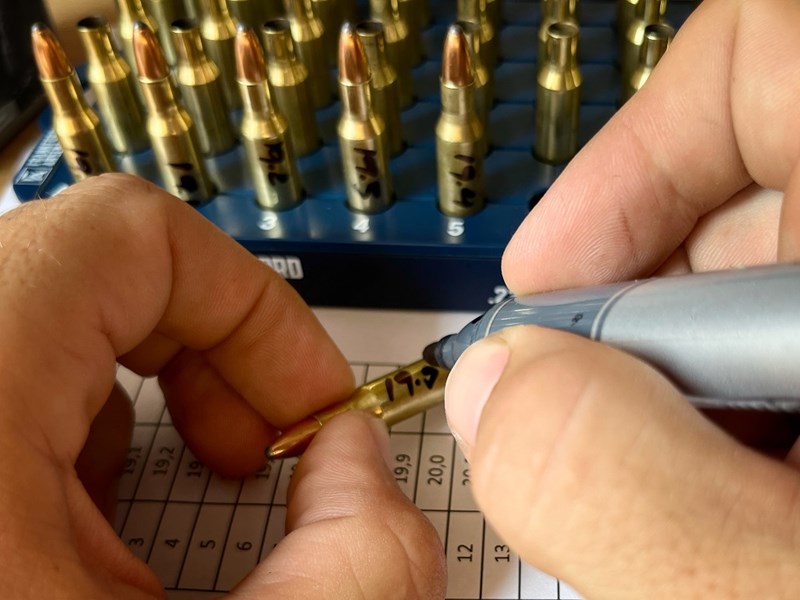
During the development stage I always mark the cartridges with the most important information. The last thing I want at the range is to get confused.
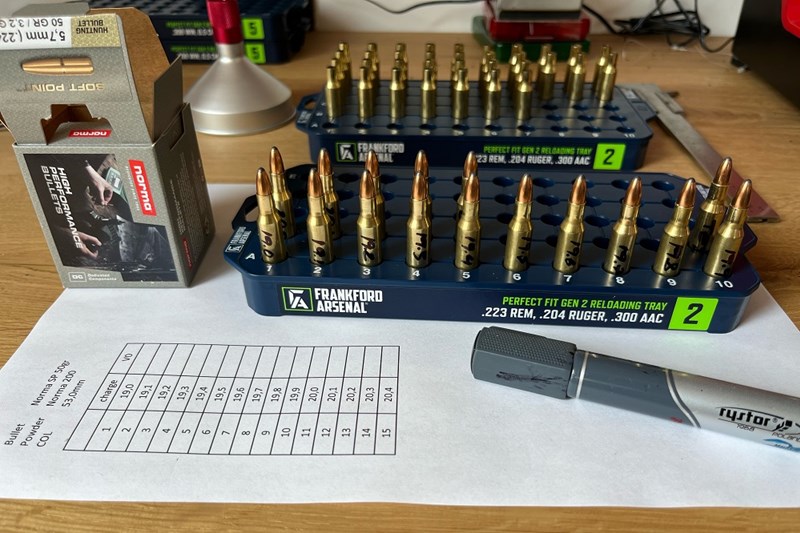
The reloading ladder is ready to be tested. Ammo with the 0,1gr of powder increment, cartridges marked, a paper with the table at hand to make the notes.
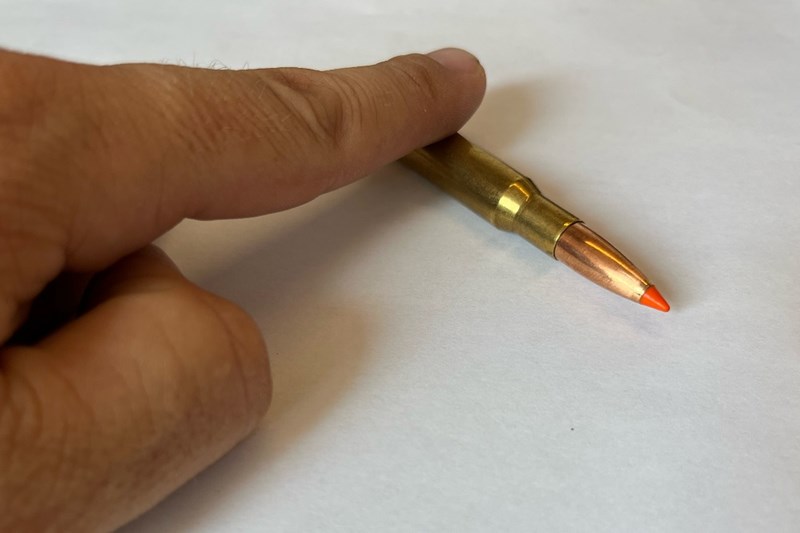
Even without fancy measuring equipment it is possible to do the quality check - here a simple concentricity test done by rolling the cartridge on a flat surface. The pointy Tipstrike will show any misalignments.
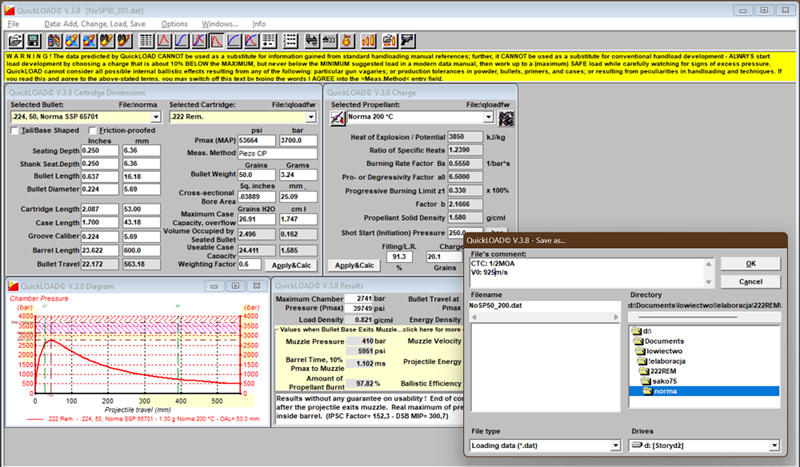
I keep records of my loads in the Quick Load computer software files. I will add some notes after the session at the range.
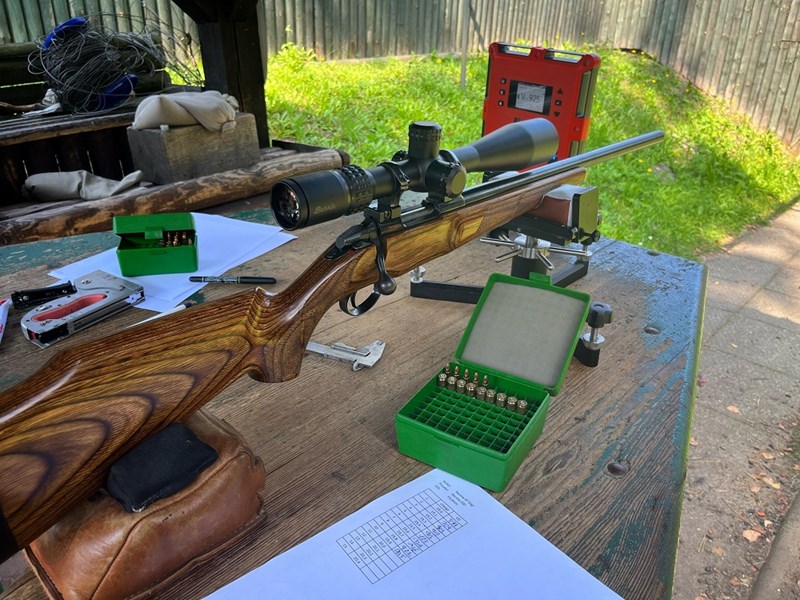
At the range: the rifle, tested ammo, a chronograph and notes.
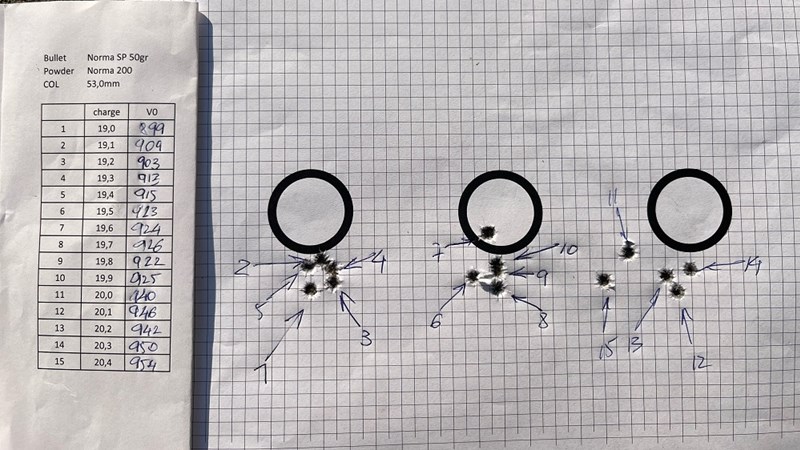
One version of the ladder: I shot 5x groups on one target, with number corresponding to my load table. The results show that the most stable loads are the light ones, the hotter it got, the worse grouping I achieved.
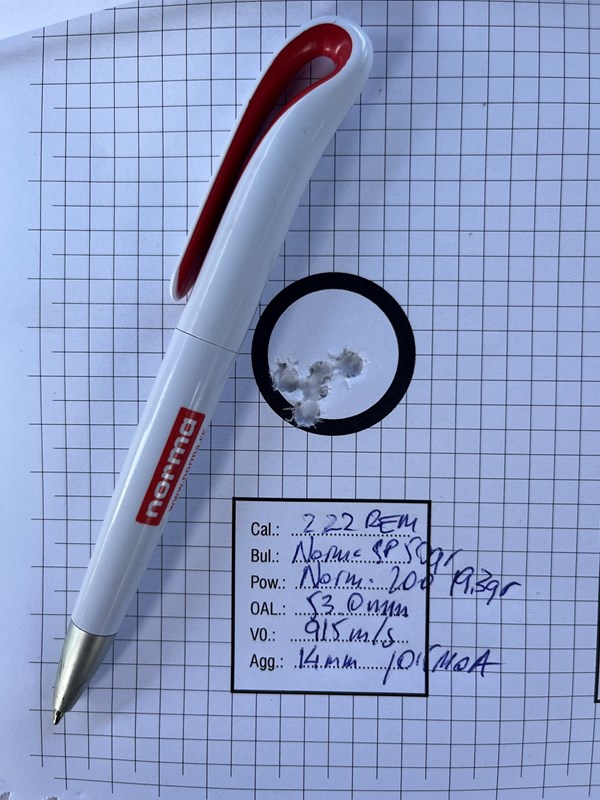
And verified result (separate session) with the load no. 4 (19,3gr). Not the greatest in the world, but 1/2MOA is more than I needed for the purpose.
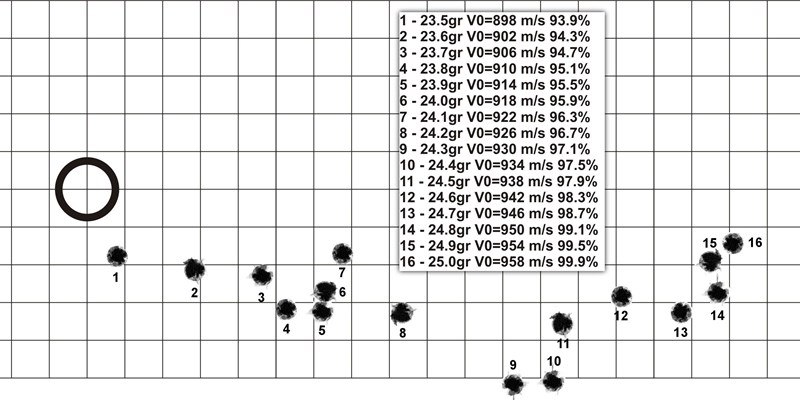
A different approach to the ladder: all bullets shot at the same target, but to keep a clear image after each shot I made a click on my riflescope (1cm/100m to the right). Loads 3-7 and 12-16 were interesting. Tested the 14th (next photo)...
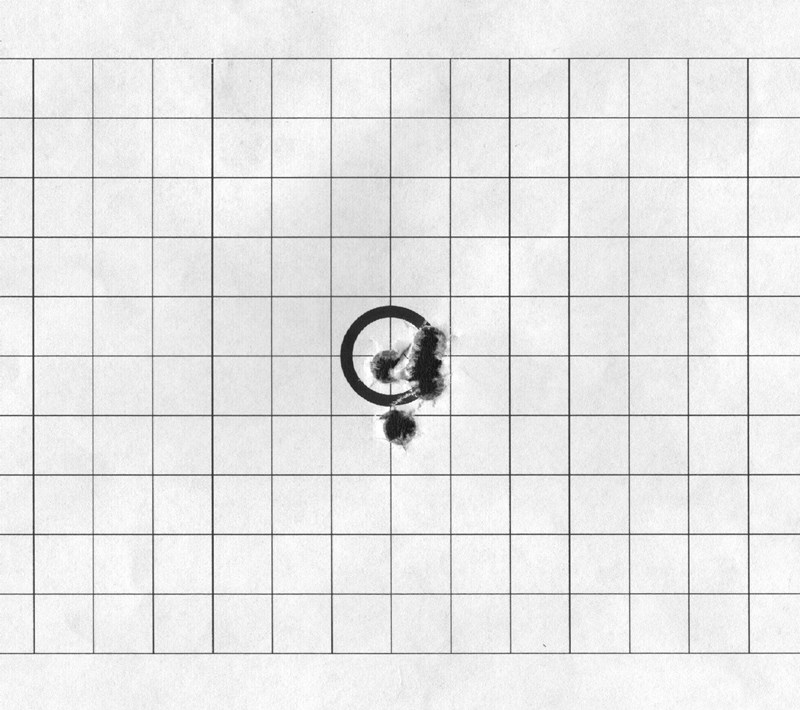
Load no. 14 from previous photo. Not happy about the flyer. It would be worth to shoot it again (maybe it was not the ammo to blame) or to make some tweaks (seating depth, slightly lighter load, etc.)